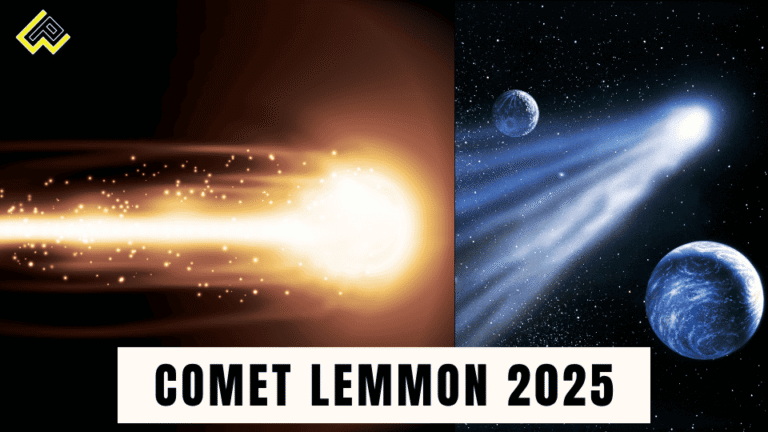Comet Lemmon 2025 Viewing Guide October Sky: Comets have captivated humanity for millennia, serving as celestial harbingers of wonder and scientific intrigue, and Comet Lemmon 2025 (C/2024 S3) emerges as a prime example from the distant Oort Cloud, offering a fleeting glimpse of our solar system’s outer edges. Discovered by astronomers at the Mount Lemmon Observatory in Arizona, this long-period visitor promises naked-eye visibility, drawing stargazers, educators, and space enthusiasts worldwide to witness a cosmic wanderer that orbits the Sun once every 10,000 years. As it approaches perihelion in January 2026, October’s approach provides an optimal preview, highlighting the roles of observatories like Mount Lemmon and tools from NASA in tracking these icy relics.
Visibility peaks from October 25 to 30, 2025, in the pre-dawn eastern sky, with the comet potentially reaching magnitude -1 for unaided viewing. No special equipment is needed for clear nights, though binoculars enhance the tail’s spectacle, making this a family-friendly astronomical event amid autumn’s crisp skies.
Celestial Traveler: The Discovery and Journey of Comet Lemmon 2025
Comet Lemmon 2025, officially designated C/2024 S3, was first spotted on October 22, 2024, by the Catalina Sky Survey team at the Mount Lemmon Observatory in Arizona, a key NASA-funded facility for near-Earth object detection. This Oort Cloud comet, originating from the solar system’s frozen fringes, follows a hyperbolic trajectory, ensuring a one-time pass through our inner realms before fading into interstellar space. Its nucleus, estimated at 1-2 kilometers wide, will swing closest to the Sun on January 18, 2026, potentially brightening its coma and tail through sublimation of ices.
As it graces October skies, the comet’s position low on the eastern horizon before dawn offers a prelude to its peak, with predictions from the Minor Planet Center suggesting a brightness rivaling Venus at magnitude -1. This rarity—only a handful of such comets appear per decade—positions it as a must-see, blending amateur astronomy with professional monitoring.
Dawn Sky Hunt: Optimal Viewing Windows and Preparation Tips
For the best sighting, target October 25 to 30, 2025, when Comet Lemmon reaches its closest approach to Earth at about 0.8 AU, appearing as a fuzzy glow with a possible anti-tail illusion from Earth’s perspective. Rise 30 to 45 minutes before sunrise—around 5:30 AM in most Indian locations—to scan the east with the naked eye; a hazy patch near the Pleiades star cluster signals its presence.
Enhance your view with binoculars or a small telescope for the coma and dust tail details, but prioritize dark-sky sites away from city lights to combat light pollution. Apps like Stellarium or SkySafari can plot its path, while weather apps ensure clear conditions. Patience pays off, as the comet’s low altitude challenges horizon haze, but early risers in rural or elevated areas stand the best chance.
Cosmic Legacy: Why Comet Lemmon Matters and What’s Next in the Skies
Comet Lemmon’s passage echoes historic visitors like Hale-Bopp, inspiring awe and advancing cometary science on water origins and solar wind interactions. As it fades post-perihelion, future sky events like the Leonid meteor shower in November 2025 offer continued wonders.
This transient beauty reminds us of the universe’s vastness, urging a glance skyward. Astronomy buffs should follow NASA or presswire for trajectory updates and imaging tips.

